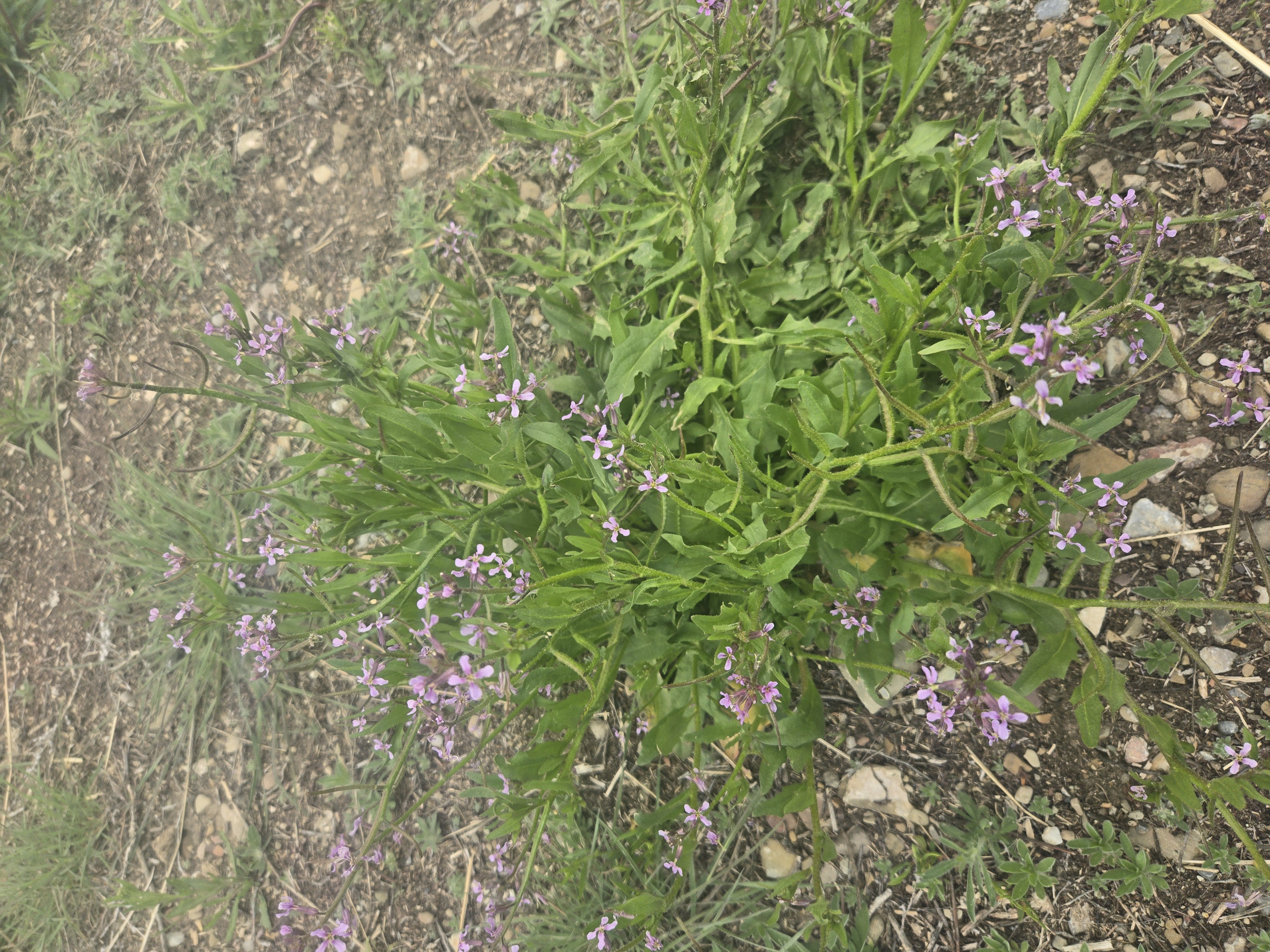Example Article for Broadwater County Extension Agent
Weed Of The Month: Blue Mustard
 | Author:
Allison Kosto, Extension Agent/Associate Professor MSU Extension – Broadwater County
MSU Broadwater County Extension Agent |
Allison Kosto
Extension Agent/Associate Professor, MSU Extension – Broadwater County
Mustard Weed is a fairly common and well-known weed. However, what some people may not know is that it actually refers to a family of weeds with many different species underneath. In fact, if you were to look in the Weeds of the West book, you will find thirteen different mustard plants and that doesn’t even count the weeds in the mustard family such as yellow alyssum or whitetop that are closely related but don’t have the word ‘mustard’ in their name. This month, we are focusing on blue mustard, which often blooms from early to late spring.
Description & Habitat
Native to Europe and Eurasia, blue mustard has naturalized through much of North America. It was first documented in the United States in Lewiston, Idaho. It can be found in dry, disturbed areas, roadsides and fields. It is known for growing in poor soil.
Blue mustard is a winter annual, which means that it produces a rosette in the fall, overwinters in that stage, and then forms an upright plant in the spring. It can reach a height of 6 to 18 inches. It has a light green stem that is lightly covered in hairs. Contrary to its name, it has purple flowers. Although they can have a blue or pink tint. Each flower has four petals in a cross shape. The plant is known for having an unpleasant odor. After it flowers, it will develop long, rounded seedpods. It has a taproot and reproduces solely by seed. Seeds can be produced within 10 days of flowering.
Blue mustard is known to be a pioneer colonist, often one of the first plants to establish a disturbed site and can be an indicator of poor soils or poor plant communities. Because they can reproduce so quickly, they can spread easily once established. They also start growing early in the spring, which gives them a competitive advantage before native or desired plants start growing. However, it is often not very competitive with a healthy plant community. Additionally, it has been linked to an off-flavor of milk in dairy animals that feed on it.
Management
Avoiding disturbance or overgrazing is often effective in preventing the establishment of blue mustard. It is not very competitive, so maintaining a healthy population of native or desired species is critical to control it.
Once it is established, the key to managing it is to prevent it from going to seed. This can be done with hand pulling, digging or hoeing before seed production. Make sure to cut or remove the root crown. Mowing can be effective but may need to be repeated. Livestock typically won’t graze the plant and since it can affect the milk, it is not recommended. Mulch is a good option in a landscape or garden setting.
Herbicides are also an option and are most effective before seed production. The plant is sensitive to most chemicals at this stage. Commonly used chemicals include Escort, Telar and Weedmaster. Always read and follow the entire label when applying herbicide. Common chemical names are used for clarity but does not imply endorsement of a product or brand.
For assistance on weed identification and management, contact the MSU Extension Office in Broadwater County at 406-266-9242.
Article Images
Click on Image Thumbnail(s) to view fullsize image
PhotoCredit: Allison Kosto, Extension Agent/Associate Professor
MSU Extension – Broadwater County
Image 1 Caption: Blue Mustard Near Townsend
Photo Provided by Allison Kosto
